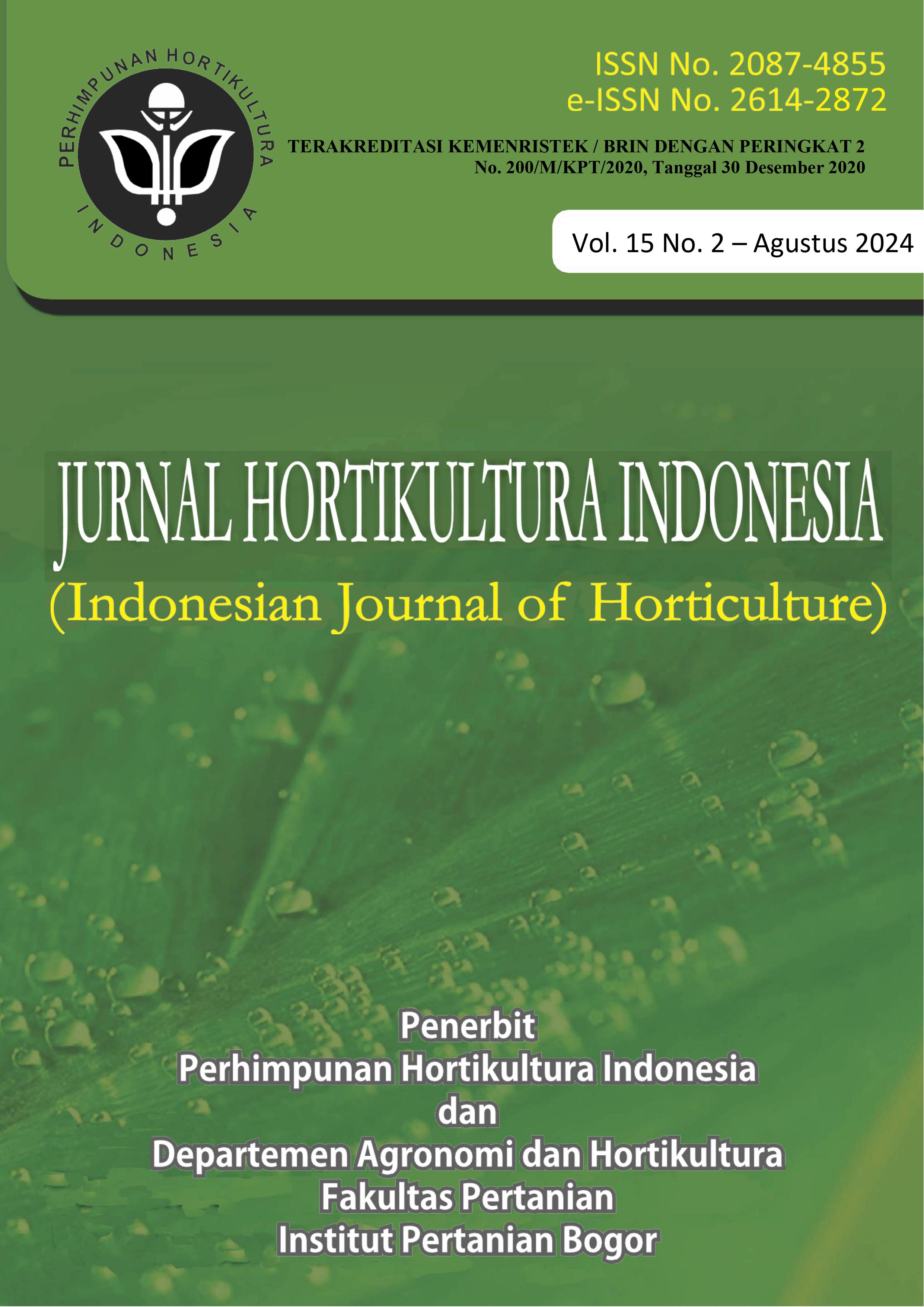Karakterisasi Morfologi Bawang Merah Cekaman Salinitas pada Konsentrasi Letal 20 (LC20) dan 50 (LC50)
Morphology Characteristic of Shallots to Salinity Stress at Lethal Concentrations of 20 (LC20) and 50 (LC50)
Abstract
Efforts to optimize non-productive soil using saline soil are an important issue related to the salt content that affects the growth and development of salt-sensitive shallots. The morphological response as a form of sensitivity and tolerance of shallot to salinity is considered to be a characteristic of varieties that can be cultivated on refined soil. The objective of the study was to determine the lethal concentration values of 20 and 50 and the morphological response of shallot plants to salinity excretion. The research was carried out at the research was carried out in the greenhouse of the Agricultural Cultivation Department, Faculty of Agriculture, University of Bengkulu, using 2-factor Complete Randomized Block Design. The first factor of concentration of NaCl are S1: 100 mM, S2: 150 mM, S3: 200 mM, and S4: 250 mM. The second factor are shallot varieties V1: Birma Padang, V2: Bauji, V3: Thailand, V4: Tituk, V5: Solok Sakato, V6: Surian, and V7: Batu Ijo Medan, with Wick System hydroponic tray planting methods. The results showed that seven shallots varieties have different LC20 and LC50 values, and morphological characterization showed a decrease in plant height, leaf number, tiller number, root length, shoot fresh weight, root fresh weight, shoot dry weight, and root dry weight.
Keywords: NaCl concentration, salt tolerance, tolerant varieties, Wick system hydroponic













